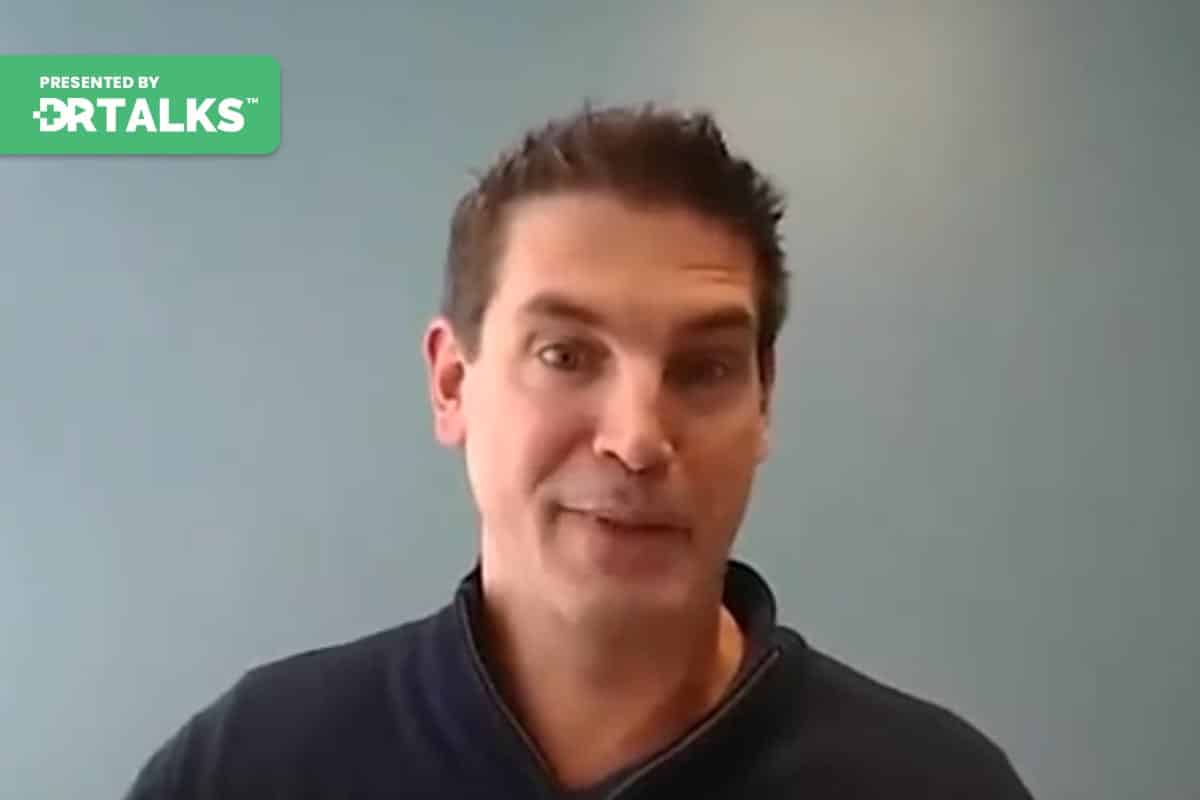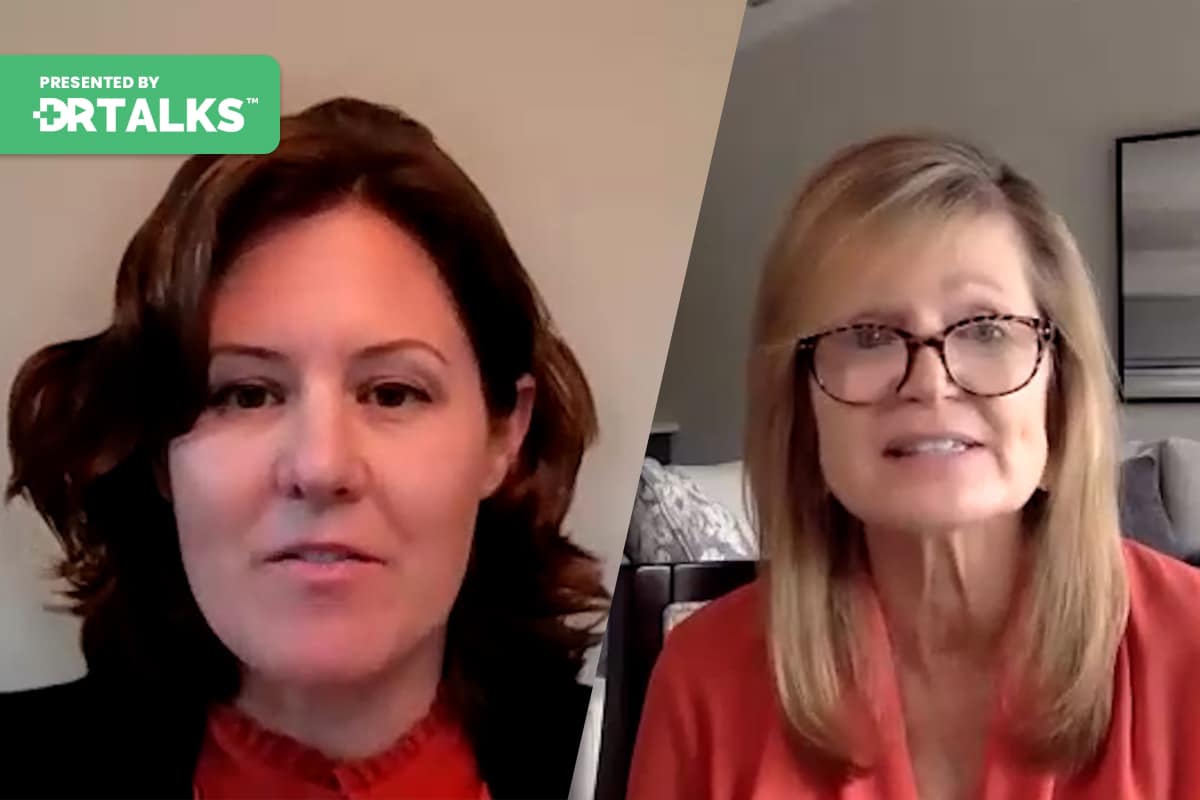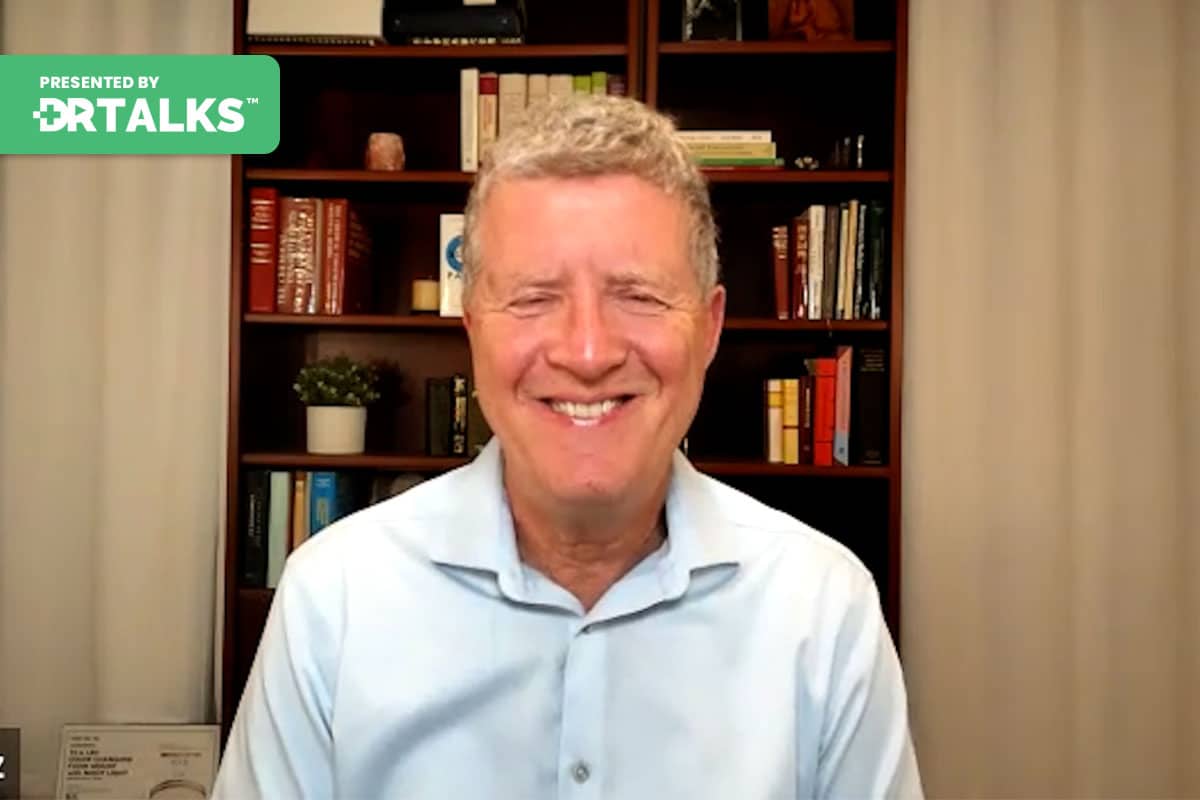Join the discussion below

Dr. Heather Sandison is the founder of Solcere Health Clinic and Marama, the first residential care facility for the elderly of its kind. At Solcere, Dr. Sandison and her team of doctors and health coaches focus primarily on supporting patients looking to optimize cognitive function, prevent mental decline, and reverse... Read More

Kelly McCann, MD, passion for understanding why certain people develop specific conditions drove her beyond conventional medicine to study first Complementary and Alternative Medicine, then Integrative Medicine, Functional Medicine, and Environmental Medicine, which led to an exploration of chronic infections and illness due to mold exposure. As a practicing Internal... Read More
Dr. Kelly McCann teaches you about mast cells and their contribution to neuroinflammation
- Learn about the negative effects of neuroinflammation
- Discover the root causes that trigger mast cell reactivity in the brain
- Learn the symptoms of dementia that suggest involvement of mast cells
- Discover treatments that reduce mast cell reactivity and neuroinflammation in the brain
Heather Sandison, ND
Welcome to this episode of the Reverse Alzheimer’s Summit. I’m your host, Dr. Heather Sandison, and I’m delighted to introduce you here today to Dr. Kelly McCann. She’s a functional and integrative physician, and she utilizes her extensive knowledge of root cause medicine in her thriving practice in Orange County. She also lectures regularly at professional conferences, which is how I originally met her and is on the board of directors for two professional organizations. She’s a graduate of Tulane University School of Medicine and the School of Public Health. She completed a combined residency program in internal medicine and pediatrics. She also holds a board certification in integrative medicine from the University of Arizona, as well as board certifications and functional medicine, medical acupuncture and a master’s in spiritual psychology. She was the host of many manifestations of Muscle Activation Syndrome Summit and the co-hosts of the Allergy and Asthma Summit. So you may have come across her before. The reason I’ve asked her to join us today is to dove into the connections between martial activation, this kind of hyper vigilant response and dementia, and how that can affect the brain directly. Dr. McCann, welcome.
Kelly McCann, MD
Thank you so much. Dr. Sandison, for having me.
Heather Sandison, ND
So let’s first define mast cells and then connect that to neuroinflammation and brain decline.
Kelly McCann, MD
Absolutely. Mast cells are part of our innate immune system. They are actually derived from the bone marrow. So they’re born in the bone marrow. And then they move to the periphery of our bodies. They line our respiratory tract, our GI tract, our skin. They have a fondness for hanging out near our blood vessels and our nerves and our peripheral nerves. And then there are also some in the nervous system in the brain as well. And their job is to survey for for foreign invaders. So they’re constantly looking for threats. And when they perceive a threat, they release all of these chemical messengers, chemokines, cytokines, proteases, trip days, growth factors, things like that. And that can cause a whole host of cascade of symptoms. And typically, this is a good thing. We want our muscles to work to fight foreign invaders. And then in some lucky, genetically susceptible people, they can get in a situation where their muscles become activated on a regular basis. And so they are hyper vigilant now and dumping all their inflammatory mediators even to things that normally wouldn’t trigger a response, like the food that we eat, you know, the smell of perfume or something like that. And so this is what we call Marcel Activation Syndrome. And it turns out this affects almost 17% of the population. So it’s quite significant for the practitioners listening. You’ve probably seen it in your practice and not even recognized it. And for the patients out there, you know, that’s like one in five people who have muscle activation syndrome. So very, very common as a condition and and only recently has it been recognized as a condition. The first case studies in the medical literature were published in 2007.
Heather Sandison, ND
Oh, wow. Very recently.
Kelly McCann, MD
Very recently. And fortunately, it’s gaining a lot of steam and momentum. So people are developing more awareness about it as a condition. And it’s fascinating how it ties in with dementia. And so we can talk more about that.
Heather Sandison, ND
There’s kind of two themes that I that you’re kind of staking my interest around when, as you mentioned, chapters and protease. Anything that ends with AC, I think of as a like a digestive enzyme, maybe this is a good thing. This allows us to process and digest things, but we don’t want to digest our brain and we can eat it. And so a lot of this is about balance and this concept of having the right things in the right place at the right amounts so that we’re getting the benefits but not getting the detriment.
Kelly McCann, MD
Exactly. And, you know, with the proteases, which break down proteins and the trip teases anything that’s going to break something down. You worry about barriers. And so this is a vital part of why I think that my cells are playing a role with dementia, because when they are triggered, whether they’re inside the brain or outside the brain, they can start to release these mediators that digest the integrity of the blood brain barrier, breaking up those proteins. And so we develop a leaky brain. And when you have a leaky brain, then more mast cells can flood into the brain. The other thing that muscles produces, they produce, you know, chemokines and and attractant. So chemoattractants. And so they’ll call to themselves. Other cells that also then can cause this inflammatory cascade and enhance what they’re already doing to break down that blood brain barrier further. They call the T cells that will cross the blood brain barrier and get into the brain. So now you’ve got this whole immune response happening in the brain that shouldn’t be happening, that shouldn’t have been protected against.
Heather Sandison, ND
And then it becomes self-perpetuating, from what I hear you saying, almost like it’s stuck in the on position. You can’t turn it off.
Kelly McCann, MD
Yes. And that also goes with the microglia. So hopefully other people and your son that have mentioned my cochlea a lot and we talk about micro glial activation. And so in many ways, this is a feedforward loop. So the cells stimulate and secrete different inflammatory mediators that trigger the microglia to become active, added the microglia and turn then secrete other mediators that trigger the mast cells. And it’s this, you know, feedforward, tumble world that people can’t get out of.
Heather Sandison, ND
So you also mentioned that this was just published in the literature in 2007. Is that right? Just 16 years ago or so? Do you and maybe this is just speculation, but that makes me think of is there’s this massive part of the population. You said almost one in five people and yet we’re only beginning to talk about it. Is it something that’s new? Are there environmental traffic triggers, excuse me into environmental? I can’t said environmental factors or environmental triggers that are maybe new to the environment that our hunter gatherer ancestors maybe weren’t exposed to or even our grandparents weren’t exposed to. Like, why are we just talking about this? How does it affect so many people but so few people know about?
Kelly McCann, MD
It was a really good questions. And absolutely, I do think that our environment is massively contaminated by a variety of different substances. I mean, we know that there are 85,000 chemicals in the environment today and we keep adding, you know, thousands more each year. And then the way that we have started to build our houses increases the risk for mold and micro toxin exposure. And so we have a lot of insults with climate changes. Things like tick borne illnesses are spreading because their habitat is spreading. And so now we’ve got, you know, tickborne illnesses that are in other places that previously hadn’t been. And you’ve got this soup then of things that trigger mussels, which are foreign invaders. And I think it’s becoming this milieu and this soup then triggers the genetically susceptible people to develop muscle activation syndrome.
Heather Sandison, ND
And you mentioned changes in in weather rate. More extreme weather means potentially more flooding. We’ve seen more hurricanes, especially on the East Coast. And so then that can create moldy or sick building syndrome, water damaged buildings, putting people at risk. So is it only mold? Is it only tick borne illness that is associated with it? And cancer, the muscle activation syndrome, where are there other things that are too are also associated with.
Kelly McCann, MD
Just about anything can trigger muscle activation. So I mean anything that the muscle perceives as a foreign invader. Right. So yes, tick borne illnesses. I find that bartonella of the, you know, chronic infections is one of the ones that triggers the most mold. Definitely triggers muscle activation, but heavy metals, other environmental chemicals can trigger muscle activation syndrome. We know that chemical, you know, multiple chemical sensitivity, which is very similar to muscle and probably has a macho underpinning to it because it can be triggered by a pesticides by volatile organic compounds. So there’s a lot of chemicals that can also trigger a massive activation syndrome. And then, you know, we just keep piling means in our bodies. And so I think we’ve reached a threshold above which people are experiencing a lot of symptoms, a lot.
Heather Sandison, ND
Of it. And I mean, it’s good, I guess, in some way that we’re starting to describe this and more doctors are learning about it so that they can provide help. So before we get into what to do about it and how you help your patients connect the dots between this massive activation syndrome and dementia or neurodegeneration in general.
Kelly McCann, MD
Sure. So in a normal, healthy brain, we don’t have a lot of mast cells there in a couple of areas, mostly around the blood vessels and and in the meninges that surround the brain. There are some in the thalamus and the hypothalamus as well. But mast cells can increase when there are infections, trauma, stress, you know. So if somebody has a closed head injury or chronic brain injury, if they have a lot of stress, and that can be emotional stress, physical stressors, you know, any sort of stressor also can upregulate the muscles activity. And the muscles are also, as I mentioned, in really close proximity in all the nerves of the body. So not only can muscle activation present as cognitive changes, which I’ll get back to, but also all the peripheral neuropathy, the pain syndromes that people can experience. And so as those if you have those insults, those toxins, infections, stress, trauma, that lends to the leaky blood brain barrier, as I mentioned.
And then all of these inflammatory mediators are cross talking with the microglia. And so it’s this, you know, mast cells talking to the microglia. The microglia, talking back to the mast cells calling in other the these other inflammatory cells that then continue to perpetuate this inflammatory state. And when you have inflammation in the brain that will use up your fruit, your antioxidant enzyme systems, including plasma allergens, and so plasma allergens get used up, you can’t make enough. Mm. My understanding from Dr. Dayan Goodenowe is that with the plasma allergens being damaged in the neural sheath. I’m sorry, the myelin sheath and also in the presynaptic neuron. If you don’t have enough plasma allergens, you can’t release the neurotransmitters. So you can’t release this little Colleen, you literally can’t make connections. And so this in neuroinflammation damages the cells, damages the neurons, depletes the plasma allergens. And now you’re set up for a situation where there’s dementia.
Heather Sandison, ND
So Dr. Bredesen has this really phenomenal analogy of thinking of your brain like a country my brain is. STEIN And if you were in fight and defend mode, you can’t be in regenerative mode. You can’t be building, right? If you think of your brain as a country that’s at war, you’re fighting and defending. And in this case, it would be against toxins or infections like bartonella or mold or or whatever it is. You’re being depleted, right? That’s taking all of your resources. And so it wouldn’t make sense to be building roads or schools. Right. If you’re a country, it wouldn’t make sense to be building neurons, building new connections if you’re a brain and you can see how there’s only so much resource to go around. And if you’re depleting all of that in fight and defend mode, it’s going to be really challenging to remember that name or where you put your keys or string that sentence together or, you know, especially do complex tasks or learn complex things. So this is this is really overwhelming for a lot of people and especially those who are dealing with it. Right. We’ve just talked about how it affects their cognition. So the thought of going down this complex path, of trying to address it, where do you start?
Kelly McCann, MD
Yeah, good question. And it’s challenging for everyone whether they have some cognitive impairment or not. Managing muscle activation is tough. It’s tricky, but it’s doable if you’re systematic about it and you walk through the different things that you can try. So I guess we can talk about antihistamines right now since that’s always the big one, right. And it’s interesting, Dr. Lauren Safran, who’s really my mentor and one of the people who’s written and talked about nasal activation extensively, said, you know, we think that there’s this correlation or we think that there’s a causation. Like if you take too much Benadryl, it’s going to, you know, cause a problem with your brain and you’re not going to remember things. And yet, you know, the way that he frames it is I think it’s correlative meaning these people’s brains are on fire. They’re trying to do something to dampen down that fire. And antihistamines are, you know, can block the release of histamine or the action of histamine. So histamine is released by muscles. It’s one of the many things that is released by muscles.
And so antihistamines can potentially be helpful. I don’t think that many of them cross the blood brain barrier. However, we’re talking about a leaky barrier. Mm hmm. There was one one study looking at the use of Clarinex, which is the prescription H1 blocker that’s available in the U.S.. I didn’t see some for the other ones, but so as it were, there’s a little bit of data to support the use of clarinex for cognitive decline. And yeah, there are other mast cell stabilizing medications. One of my favorite is Crumlin. Crumlin sodium. It’s typically taken orally, but it can also be taken as a nasal spray. And you know, the idea being that it works where we put it. So if there are mass cells that are being triggered in the nose and the sinuses putting nasal cream in the nose, which is available over the counter, you know, it’s very inexpensive. Why not be used some multiple times a day? May help calm those mast cells down that are near the crib form plate that are very close to the brain. So that’s another option that people can try in terms of oral Crumlin. There are some studies that have shown that it can be helpful with some cognitive impairment as well. Interestingly enough, again, the mast cells are being treated in the gastrointestinal tract. So the way that Crumlin works, it literally is a barrier. So people drink it before they eat. It provides that barrier between the food and the muscles, which are on the inner lining of the gastrointestinal tract. And they’re not being triggered as much. They’re not producing. They’re inflammatory mediators, which then can spread to the body and produce employment, inflammation elsewhere, including the brain.
Heather Sandison, ND
Yeah, I’ve seen patients do phenomenally well with Crumlin and they typically get it compounded. Do you or do you worry about Excipients? For patients that are supersensitive, do you typically compound things or you mentioned there’s the over-the-counter nasal crome, so do you tend in one direction or the other?
Kelly McCann, MD
You know, I find that the vast majority are able to tolerate the commercially available kind. And then I do have those supersensitive people for whom compounding is necessary. You’d be surprised how many people do okay with the commercially available ones. There is a a website called NIH DailyMed that actually lists out all the excipients. So you can find out if you do have an adverse reaction to something, what might be the inactive ingredient in that formulation? And in terms of oral Crumlin, it’s just Crumlin in water in a little plastic vial. And so there really isn’t anything in it. What I’ve seen is that people don’t like the plastic. So there are some people for whom that plastic is causes a reaction. But that’s again, on the more extreme side of things. And Crumlin doesn’t work in everybody. And many of my muscle patients, I’d say no, maybe 30%. It’s a game changer. And the rest of like no, not so much.
Heather Sandison, ND
Right. I’m so curious about your experience with my mouth. So patients I’ve seen it, the people who do really well with the supplements like the Quercetin and the Dow. Oh, and there’s a handful of them basically the all clear and the cheese inhibitors, they tend to do really well with the supplements. And then the people who do really well with the prescriptions and the sort of synthetic things tend to do better with those and they’re sort of into camps. This is totally anecdotal, but just sort of the pattern that I see in my clinic. And I’m wondering if you’ve seen something similar.
Kelly McCann, MD
You know? Yes, I know. I mean, I definitely have people that can do both. And we tend to do things in layers. I know that many of my colleagues, Dr. Afrin included, tends to start with the pharmaceuticals. You know, the pharmaceuticals are inexpensive, they’re readily available. And so it’s easy to start with like the antihistamines and kind of walk through Desertec. How does Claritin help? Does Allegra help all now? Clarinex I guess I’ll use Clarinex more. The Pepcid and and those are easy and oftentimes you do get some benefit if, if histamine is an issue for people, which it often is but not always, and then we start layering in the supplements, it does depend on what the people want to do to you know, some are more inclined to do supplements.
Heather Sandison, ND
Got it. And you know, we’re talking about treatment. I forgot to ask you about testing. What is your take on testing? Do you do it or do you skip it? Is it just sort of a therapeutic trial to see how people respond to the intervention? How do you know if somebody has this or not?
Kelly McCann, MD
Very good question. So there is a consensus paper, which I’m one of the many, many authors along with Dr. our so a whole team of people put out a consensus statement and it’s really a clinical diagnosis much like Lyme disease is considered a clinical diagnosis. You have to have symptoms and multiple systems. So if someone, you know, just has cognitive impairment and they don’t have any other problems anywhere else in the body, then it is likely not going to be effective treatment for them or worth pursuing. But most of our muscle patients, I’m sure you’ll agree, have multiple systems and multiple, multiple symptoms in multiple systems of the body. So people will have fatigue, they’ll have headaches, they’ll have brain fog, they’ll have muscle aches, they’ll have palpitation patients, they might have chest pain, they could have interstitial cystitis, irritable bowel symptoms, you know, peripheral neuropathy, kind of, you name it. Any system is fair game. So that’s one of the most important clinical presentations. And then the laboratory values can support that diagnosis.
They’re tough, though. You really have to have a lab that can handle the specimen appropriately because many of these mediators are short lived. They’re, you know, heat, lay bile. And so they have to be like the blood, for example, has to be drawn in refrigerated tubes. It has to be centrifuged in a refrigerated centrifuge. Most lab cause inquests around the country do not have those facilities. And so it becomes very difficult to get appropriate testing. We’re looking for histamine, track days, Cro-Magnon A and then some prostaglandins and Luca trains as well as some of the metabolites in blood and urine. I’ve managed to get my local hospital to do the testing and it’s, you know, time intensive for the patient, 24 hour urine, blood, additional random urine. And sometimes you can do the tests. And, you know, we’re checking like eight different markers and there are hundreds, if not thousands of mediators that these muscles are producing. So it is a little bit like looking for a needle in a haystack and so we can miss it. And if people don’t have insurance to cover that testing, it’s prohibitively expensive. It can cost, you know, 2000 plus dollars to do it.
So for some people, it’s not worth it. Now, I will say I do check histamine levels through Lab Corps inquest. Now Histamine is not just produced by the mast cells, it’s also produced by other, other cells. But it’s a reasonable biomarker that I can get in just about everybody. You can check triptans as well, but triptans is rarely elevated in nasal activation syndrome patients. It is more of a marker of the total number of muscles in the body. There’s actually a rare cancer called systemic M.S. ptosis. And in those patients, they have elevated triptans levels. I actually, you know, through learning about mass, I was able to diagnose the patient with systemic M.S. Ptosis. Fortunately for him, we figured it out, but very rare, like one in 10,000 people actually have that. So if you do have a slightly elevated triptans, then that is highly suggestive of muscle activation. And what we’re looking for are two labs, either, you know, like an elevated triptans, I’m sorry, elevated histamine, maybe an elevated ground in a or you could have two elevated histamines at two distinct times. And that would support the diagnosis of nasal activation.
Heather Sandison, ND
I mean, what if people respond? They choose not to do the testing, they can’t afford the testing if they are responding to treatment. Does that necessarily mean that they have muscle activation?
Kelly McCann, MD
Most likely in my book, it does, yeah. So response to treatment is important. The last potential diagnostic clue can be if somebody had a colonoscopy or an endoscopy or even a cystoscopy in the bladder, they can have special stains applied to those biopsies. The stain is called C 117, which is specific for mast cells, and then they can look at the count of mass cells and a high power field. And if they’re greater than 20, that also qualifies as a minor criteria for muscle activation syndrome.
Heather Sandison, ND
And is that routine that someone would look for that I know to be you’d have to order that and kind of just if they’re doing an endoscopy, maybe add it but would you ever order in endoscopy upper lower for diagnostic purposes?
Kelly McCann, MD
No, not not generally. But you know, once you get to a certain age, you’re supposed to do at least the colonoscopy on a routine basis. And you can also request that the stains be added to the biopsies if it was done within a couple of years. And they happen to have kept the tissue samples, though, that’s a great thing to do. If somebody had a colonoscopy last year and you’re seeing them and you’re trying to work them up for mass so you can, you know, write an order to the pathologist or a gastroenterologist and request that finding a gastroenterologist to work with and a pathologist who’s willing to do the stains and do the counts appropriately is also helpful.
Heather Sandison, ND
Yeah, having that network, I’m sure that they’re not a dime a dozen. And then excuse me. Okay, so with this workup, there is this basically adding these nasal stabilizers that you’ve described. You know, this is the supplements and some of those medications that you talked about is that curative, like, can anybody get up and over this? And I want to understand like is sensitivity hypersensitivity whether it’s multiple chemical sensitivity or other types of the hypervigilance hypersensitivity. Is that a hallmark of this? Does that have to be there in order to be diagnosed with nasal? Or do some people not really have extra additional sensitivities to foods or chemicals or whatever it is and still have?
Kelly McCann, MD
Mazo is a very good question. The answer is yes. I do have a handful of patients who don’t. I wouldn’t describe themselves as you know, sensitive to chemicals or even have food sensitivities. I had one young gentleman, he had chronic fatigue. He had, you know, post exertion, post exertional malaise. He had had an absinthe bar infection. But he was pretty functional, right. He had some like little, little niggly problems, a little bit of neuropathy, a little, you know, just not not huge problems. But he actually had three markers in the testing that were positive. I was like, wow, it was very interesting. And treating him for Mass. So with some of the non-histamine things, it did actually make a difference for him, improving his exercise tolerance and things like that.
Heather Sandison, ND
Wow. Interesting. Okay. Now, I do want to get into this idea of I mean, cure is always a funny word, but is it fully resolving maybe this issue? So is this something that people have to live with forever and always be treating, or is there some way out?
Kelly McCann, MD
I believe that there’s always hope and there is always improvement, if not full on resolution. I have to believe that. Right. That’s why we do what we do. And I’ve seen it, too. So it’s multifactorial, I think. I think the way that I think about treating muscle activation is kind of like a three legged stool, right? So you’ve got the immune dysregulation of your muscles being activated. That’s one leg. Then oftentimes there’s also vagus nerve dysfunction. So addressing vagus nerve issues, making sure that you’re getting into parasympathetic or vagal tone is correct is really important. That’s number two. And then, you know, there’s the central sensitization. So like the limbic system activation and really does have to be addressed. Many of my patients with muscle activation have histories of trauma and this has to be addressed. So what I see is that patients do things in layers.
You know, they come in, they can’t eat anything, they can have like five foods and they’re reactive to all sorts of things and they feel terrible in their, you know, review of systems list checks, all the boxes and all the systems we start where they’re at. We start with little, teeny, tiny pinches of things and calm down those muscles, maybe do some vagus nerve exercises, start to work on the brain with limbic system retraining and then they get some degree better. And then we start to look for, okay, what’s the trigger? What are the root causes of these things that have made your muscles go so haywire? Oftentimes it’s mold, right? So then we identify that they’re living in a moldy house or they were living in moldy house. We’re going to start to address that, to address their chronic infection. And so it becomes this layering effect of calming things down on the on the three legged stool, looking for the root causes and doing the mind body work. You know, I had one young woman first. She had to deal with her trauma of being ill for so long. That was really the first trauma that she had to deal with. And as she started to feel better, then she realized, okay, I got some trauma that I’ve had in my childhood that I need to deal with. You know, you can’t dove in at the bottom. You have to dove in at the top where you’re at now. What what are you dealing with on a day to day basis? And as things start to improve, as you start to get your brain back, get your health back, then you can dig a little bit deeper. And it’s those folks who are willing to go there and look at leave no stone unturned that really get better.
Heather Sandison, ND
You know, I’ll just use this as an opportunity to share that. I was at a social event recently and a friend of a friend sees you as a patient, is raving about how wonderful you are, first of all, and she has been through this process with you and gotten so much better. She’s living a normal life again. She’s got a few kids and she wasn’t able to get up and take them to school. She was she was barely able to be a mom to them for years. And now she’s thinking about going back to work. And she’s done exactly what you’re describing. She’s taken off one layer at a time. It hasn’t been an overnight transition, but she’s back and she’s feeling more like herself again. And so I just, you know, as a testimonial to you and your process, we’re both in Southern California, but an hour and a half or so away from each other. But it’s bound to happen, right? I’m a doctor. I show up at these places and people are like, oh, I know so. And they tell me they’re all about things. And then I asked, Who are you seeing? Dr. Kelly McCann I was like, You are the right doctor. Good, good work. And, you know, she was the one really telling me that because she’s done so well. And she described almost exactly what you just shared, going through some of the testing, starting with the massive activators, digging into her traumas and not in a way that was wounding for their wounding, but it really was healing and that even her illness was a trauma in and of itself and losing her job and going through all of that. So I think it’s nice for people to have a roadmap now. It’s not easy. It requires work, it requires patience, it requires perseverance and a trust in the process. But it is absolutely possible.
Kelly McCann, MD
Yes. Amen.
Heather Sandison, ND
So is there tell me, have you treated older folks who have dementia and seen people regain some cognitive function using this intervention, this approach?
Kelly McCann, MD
Yes, definitely. I actually use a lot of phospholipids too, so I use a lot of phosphatidylcholine in my practice, both Ivy and a girl. And I found that to be so profoundly helpful for patients. You know, when people are younger, they have an expectation that they’re going to get their brain back, right. And then when they’re older, they get really concerned that it’s not going to come back. But I absolutely have seen it come back. And one woman who was working as a nurse when she’s in her early seventies but had to stop working because she couldn’t she couldn’t function anymore. And she’s back. You know, we did the work. She’s doing I.V. PC. She’s taking plasma halogens, too, which is pretty awesome. And she’s working again. She’s so excited.
Heather Sandison, ND
Oh, my gosh. So wonderful. Getting to go back to work. Right. That is meaningful.
Kelly McCann, MD
Yes. And there were it was touch and go there for a while. You know, she had very low sodium. She had balance issues. She couldn’t walk down the hall without, like, you know, teeter tottering over. She had to take notes and keep track of everything. And, you know, she was anxious and depressed. She’d come into my office and she’d cry, you know. So this was not a quick fix, but, gosh, getting her out of the mold, giving her some muscle, stabilizing supplements and medications, it was just really profound.
Heather Sandison, ND
Transformative for people. How amazing and how hopeful. Look, Dr. McCann, is there anything else that you want to share our listeners? I definitely want them to understand where they can find out more. And certainly if our anyone attending wants to learn more deeply about Ms.. So activation, you have your own summit that’s going live in June of 2023, October oh, sorry, October of 2023. Okay, great. So in the fall and the fall, fantastic. And also, it sounds like you’re still seeing patients. Are you still taking new patients? If someone wants to work with you, how do they found that more?
Kelly McCann, MD
I’m currently not taking patients, but I hope to open to new patients hopefully within the next month or two. But that will be exclusively in California. Unfortunately. And then I do have an online business too. So that’s a DrKellyMcCann.com my as the spring center and I will be offering more courses on DrKellyMcCann.com so look for courses there on Nassau and other other topics.
Heather Sandison, ND
Okay we need to go into the details of which supplements help not only with Marcelle but also with cognition specifically. So you have a familiarity with a lot of the literature and some of it comes from mice, but some of it is definitely applicable to humans. Can you and especially with supplements if they’re low risk, low cost, this is worth trying. Can you share what you found?
Kelly McCann, MD
Sure. Absolutely. It was very exciting, actually. So there is literature to support Luteal in Luteal and is kind of similar to Quercetin. Dr. Seer DEO series writes about it extensively and he uses it in both cognitive decline and in autism. So Luteal and is a great one to try. Quercetin of course, actually also has literature to support its use. I think it’s my studies. There was one study, it restores BNF and it actually helps with the gut dysbiosis piece of the Alzheimer’s, which was pretty cool too. There’s one called PGA Pomodoro and Ethanol Amide, and that’s.
Heather Sandison, ND
A miracle, I think is what I hear.
Kelly McCann, MD
America as one of the products out there. Yeah, there are other products out there. So some people respond great to miracle, some people respond better to other products, but yap is another one and that can help with pain to perilla seed extract actually, picked and all has some evidence, particularly in Parkinson’s disease. So in people with Parkinson’s dementia, that was a human study. It’s very exciting. Skull cap is another one. Berberine, turmeric or curcumin? Of course that study is. And rice sorry in mice crosses the blood brain barrier protects the neurons ellagic acid from raspberries evening primrose oil and the omega is of course visiting Petunia and Aseel Cysteine, Nigella, Steve Oh yeah, resveratrol.
Heather Sandison, ND
There’s so many good ones that are many good ones, super helpful for the brain. And then you’re seeing these are also helpful for Mazo is that.
Kelly McCann, MD
These are all mass cell supplements. So yeah, in preparation for my summit, I did a literature search and found all of the supplements that I could think of and I came up with 65 that have mass stabilizing, anti-inflammatory, anti allergic effects. And then in preparation for today, I looked up ones I didn’t get to all them, but I looked up quite a few that had literature and cognitive decline.
Heather Sandison, ND
You know that. So what I think is so hopeful about that is you described your patients that come in to you and they can only five foods and there’s a lot of fear around putting anything in their mouths because so many things are caused reactions and are debilitating. Right for sometimes for a couple of days, sometimes for a week or two that it takes to get back to baseline.
Kelly McCann, MD
Right.
Heather Sandison, ND
And they can feel so limited. And when you only have a few things that potentially can help, that can feel really scary, like what if I can’t tolerate the things that help? How am I ever going to get better? And when you say that, there’s 65 supplements that have literature that are say that suggests that they would be helpful for meso all of a sudden it opens up this world of possibility that, okay, if I don’t react to that one, I can use it. If I respond well to this one that I can use it. You know, you can start to test things and hopefully really make progress. You’re not going to run into the end of the road, right? You’re not going to hit a dead end where you can’t get help from the things that we know could help. And so that just that sounds super, super hopeful. And it made me think of a handful of patients who feel like they’ve tried everything. And I’m like, no, no, no, you haven’t tried everything. They hope for you yet. Like how to get doctor. We can list.
Kelly McCann, MD
I’ll share the list with you.
Heather Sandison, ND
Thank you. Thank you. I’m going to look forward to getting it. This is just really, really helpful and amazing. So thank you so much for doing all of that work. It takes a lot to comb through the literature and organize those materials and I really appreciate it that you do that. So welcome.
Downloads










